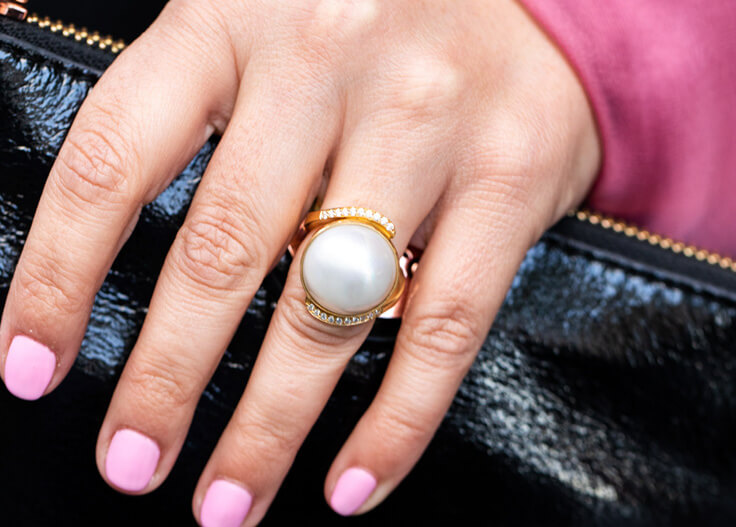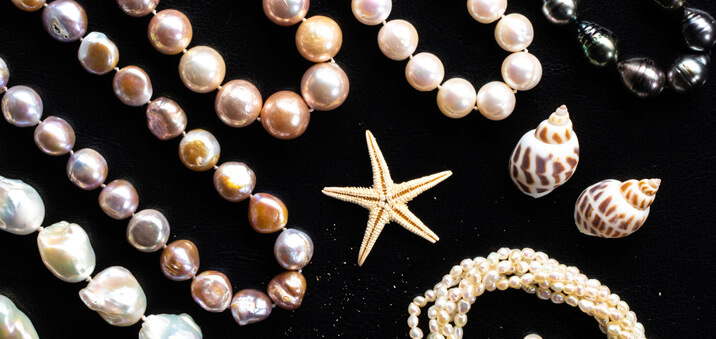The Art of Jewellery
Jewellery has always been a changing and growing art, and through the study of ancient civilisations we can see the importance of jewellery throughout time. Ancient Egyptians are a perfect example of a civilisation who places great importance on their jewellery, with their lavish use of ornaments such as elbow bracelets and rings.
This emphasis on beautiful jewellery can be tracked and followed through time and between countries; from ancient burial tombs, to artistic Greek and Roman jewellery, through to the modern day. Although these jewellery styles do share common traits, the unique variations of each region and time have continually shone through.
In the Renaissance period, jewellery became more importantly connected to fashion. With growing technology and finer tools, more specific, intricate designs were made accessible to a wider audience, albeit only the society’s elite.
Following this revolution and in response to changing fashion, diamonds became increasingly popular during the 17th and 18th centuries. To date, the art of jewellery is still changing, and we are excited to be creating history today with our new and unique styles.
Jewellery is a long-lasting symbolic token for something much greater. Love and romance is celebrated by jewellery today and will continue to for generations to come. Other gifts, such as flowers or chocolates, only last a short period and then are thrown away or consumed. The long-lasting nature of jewellery is a symbol of the importance of the relationship it celebrates.
The process of creating a quality jewellery piece is awe-inspiring. Just picture the incredible way that gems are formed deep under the earth’s surface in tremendous pressure and temperature. Consider the tremendous effort and dedication that it takes to find, collect and process these precious resources. Appreciate the creativity and skill that the jewellery designer invests into making you that special piece.
Jewellery reflects personality and is a beautiful expression of your commitment to one another. Not only does jewellery make a special gift now, but it gives that special someone a chance to pass on their piece on as a family heirloom from generation to generation.
Caring for Jewellery
There is nothing more precious than your jewellery and a little extra attention can go a long way in preserving the lasting quality of your pieces. If treated well, jewellery can last many lifetimes. Here are some simple but effective tips to keep in mind:
- Check your jewellery regularly for loose or missing stones.
- A quick check-up by a jeweller can easily solve long term problems.
- Consider getting necklaces or bracelets restrung to prevent damage or breakage.
- Keep a close eye on delicate clasps.
- Keep jewellery separate in soft pouches or containers, to prevent scratching.
- Remember that gold and some other metals are very soft and are easily scratched if treated roughly.
- Even a little dirt will cause noticeable scratches if left for a long period.

Diamonds
Only the best craftsmen can create a true masterpiece with diamonds. Cutting to precise dimensions requires state of the art technology, experience and skill, and selection of the best diamonds is paramount in creating a piece that truly stands out for all the right reasons.
Diamonds were first found in India around 500 BC. As the traditional symbol of love, they are most commonly used as the anniversary stone for 10th and 60th wedding anniversaries.
Diamonds can come in many shapes, including round brilliant, pear, oval, marquise, heart and emerald. As the hardest substance known to humankind, they are composed of crystallized carbon.
To help ensure that your diamond piece is of the best quality, consider the 4 C’s.
The 4 C’s
Cut
The cut of the diamond mainly relies on the skill of the diamond cutter creating the ring. An excellent cut should bring out the lighting and hidden fire of the diamond. A poorly cut diamond may seem dull or lifeless. A quality diamond has brilliance and a strong sparkle.
Colour
Put a range of diamonds together and you will come to appreciate the subtle yet important variety of colours. While most appear white on first glance, most have a subtle hint of colour such as yellow. Colour is rated on a scale of ‘D’ (colourless) to ‘Z’ (brown). Diamonds can also appear naturally in pink, blue, green or red. While colour is often a matter of personal choice, the best quality diamonds have a strong, pure, consistent colour or no colour at all.
Clarity
As a natural creation, tiny imperfections or marks inside the diamond are a normal part of diamonds. Most of these small imperfections are invisible to the human eye. However, internal marks, known as inclusions can affect the brilliance and sparkle of a diamond if too many or too large. External marks, known as blemishes can also affect clarity. Perfect clarity diamonds are extremely rare and expensive.
Carat Weight
Diamond weight is measured in carats, which is the equivalent of 200 milligrams. Each carat unit is divided into 100 points. A diamond weighing a quarter of a carat weighs 25 points. The larger the carat size the more valuable the diamond.
Pearls
Myth says that pearls were first created from water rolling off the body of Venus, the goddess of love, and back into the sea. Pearls are symbols of luxury and grace and are commonly associated with people of high standing.
Pearls come in many varieties, with their colour ranging from cream to white to silver. The colour of a pearl’s overtone shine also adds to the great diversity. The shine or lustre of a pearl is a good sign of quality as the brighter and clearer the shine of the organic gem, the less minute blemishes exist.
It is extremely rare to find a perfectly round pearl, just as it is uncommon to find a pearl with no blemishes on its surface.

Pearls are delicate biological creations. Inappropriate treatment could lead to degrading the beauty and quality of your pearls. Use the tips below to help preserve their quality for years to come.
Try to avoid
- Scratching, abrading or rough handling
- Excessive heat, direct lights or exposure to strong sunlight
- Exposure to any acids, alkalis or cleaning agents
- Exposure to perfumes, cosmetics or sweat
- Dehydration by locking in airtight containers
Tips to remember
- Wipe pearls with a soft slightly wet cloth to remove any body residue, before long term storage
- Don’t wear pearls while swimming or bathing
- Put on your pearls after you have applied makeup, hairspray and perfume
- Only wash in warm soapy water, and do not use detergent. Rinse in clean water and dry with a soft towel
- Remember to get your pearls checked regularly by an expert
Gold
Gold is one of the most revered and respected mediums, and with roots at the beginning of recorded history, it is a sign of wealth, honour and prestige. It does not tarnish and effortlessly brings out the beauty of other gem settings. For the jeweller, it is a flexible working metal that can be integrated into a range of designs.
Gold is respected more for its beauty than its rarity. There are many other rarer resources, and yet gold is still revered as one of the most appreciated of precious settings.
Gold most commonly comes in two forms: white and yellow. For some, the more neutral white gold is flexible, blending in well regardless of colours or shades. Some others prefer the stronger more outstanding nature of yellow gold.
Pure gold (100%) is usually too soft for most purposes, and thus other metals such as silver, zinc and nickel are mixed in to form a stronger alloy. The nature of the other metals used in combination with gold can have a subtle yet important effect on the colour and shine of gold.
The carat of the gold represents how pure the gold is:
24 carat gold – 100% gold
18 carat gold – 75% gold
14 carat gold – 58.5% gold
9 carat gold – 37.5% gold
Birthstones
Birthstones originate long ago from the days of astrologers and magicians. As an ancient part of civilisation, they still remain an important part of many modern people’s lives. Birthstones are believed to contain special protective qualities, as well as bringing good luck and fortune.

| Month | Stone |
|---|---|
| January | Garnet |
| February | Amethyst |
| March | Aquamarine, Bloodstone |
| April | Diamond |
| May | Emerald |
| June | Pearl, Moonstone |
| July | Ruby |
| August | Peridot |
| September | Sapphire |
| October | Opal, Tourmaline |
| November | Yellow Topaz, Citrine |
| December | Turquoise, Blue Topaz |
| Star Sign | Stone |
|---|---|
| Aquarius | Sapphire |
| Pisces | Coral |
| Aries | Amethyst |
| Taurus | Emerald |
| Gemini | Aquamarine |
| Cancer | Jade |
| Leo | Ruby |
| Virgo | Cornelian |
| Libra | Diamond |
| Scorpio | Topaz |
| Sagittarius | Tuquoise |
| Capricorn | Agate |
